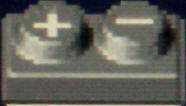 |
Connecting to the Grid
Connecting to the internet serves no purpose if the output of your converter isn't also connected to the power grid. Of course this is optional, but if you want to do it, here are some issues.
As things go normally, the electric grid supplies power to your house, which soaks it up by the kilowatt. In the United States this power comes to you (typically) through a high voltage step-down transformer mounted on a pole outside your house. The power you get out of your wall socket is nominally 115V, which is half of the 230V that is actually delivered to your house. The other half, in effect, simply goes to different sockets. But entering your house it's 230V. Since it's AC, it also has a frequency, and that is 60Hz or cycles per second. Unlike the voltage, which can drift between 220V and 240V depending on time of day, load, and other factors, the 60Hz maintains a short-term average of a small fraction of a Hz, and long-term average of fractions of a Hz per year.
If you want to supply power to the grid, you have to get the frequency and voltage right. If you supply the right voltage but your frequency (actually phase) is off even a tiny bit, your voltage won't be right at the right time, and you will be fighting the grid instead of helping it. If your voltage is too low, you will be absorbing power; if too high, the grid will demand far more power than you can possibly supply, even from your mighty Prius. To solve these problems, the commercial solar and wind power inverters don't even try to supply voltage; rather they supply current. And instead of generating their own frequency, the synchronize to the frequency supplied from the grid. This handily solves their problems, but not ours. If the grid goes away, what happens? There is no synchronization, but far worse, there is no voltage stability. If you have a 5KW current inverter supplying a 5KW load that needs a particular voltage, all is OK. But if the load decreases, the inverter continues to try to supply 5KW, and the voltage increases. This can cause some serious damage to your reading lamp if that's all you're using at the moment.
Well, then, why not design the inverter to limit the voltage to a narrow range if the grid goes down, and also generate your own frequency, which shouldn't be a big challenge. Good questions. Two answers:
- They designed the inverters, and foolishly didn't consult with me.
- It's considered bad form to slaughter the utility company employees* who are climbing the poles attempting to fix whatever caused the outage in the first place. (In fact, it is considered bad form to slaughter any service employees, even if they work for the cable company.)
Huh? Who's slaughtering utility company employees? You are, if you connect an operating inverter to the power line. Remember that transformer that converts high voltage to 230V? Transformers go both ways, so to speak. Connect 230V to the "secondary" output, and it gets transformed to high voltage on the primary, which is connected to the wires on the pole. This is something of a problem when some poor guy trying to fix things is also connected to that wire and expects it to be dead. Feeding power back to the grid when it's inoperative causes this problem, called "islanding." The commercial inverters are designed (as they should be) to avoid this happening, which makes them essentially useless for our purpose.
None of this means that this project is doomed. For example, one simple solution would be to have two inverters available: An anti-islanding solar power inverter to feed power on demand to the grid, and a normal voltage-regulated inverter to supply power to the house as circumstances dictate. It's a bad solution only in economic terms, since you would have to pay for two expensive pieces of electronic hardware to accomplish very similar tasks, one at a time.
As mentioned earlier, I don't have a good solution yet. The solar power inverters won't work at all as a UPS, and I have yet to find an appropriate inverter for UPS duty commercially available. There are no theoretical reasons why one shouldn't exist; it's simply a matter of finding or, as a last resort, designing appropriate hardware.
*Singing: "I am a line person for the county..."